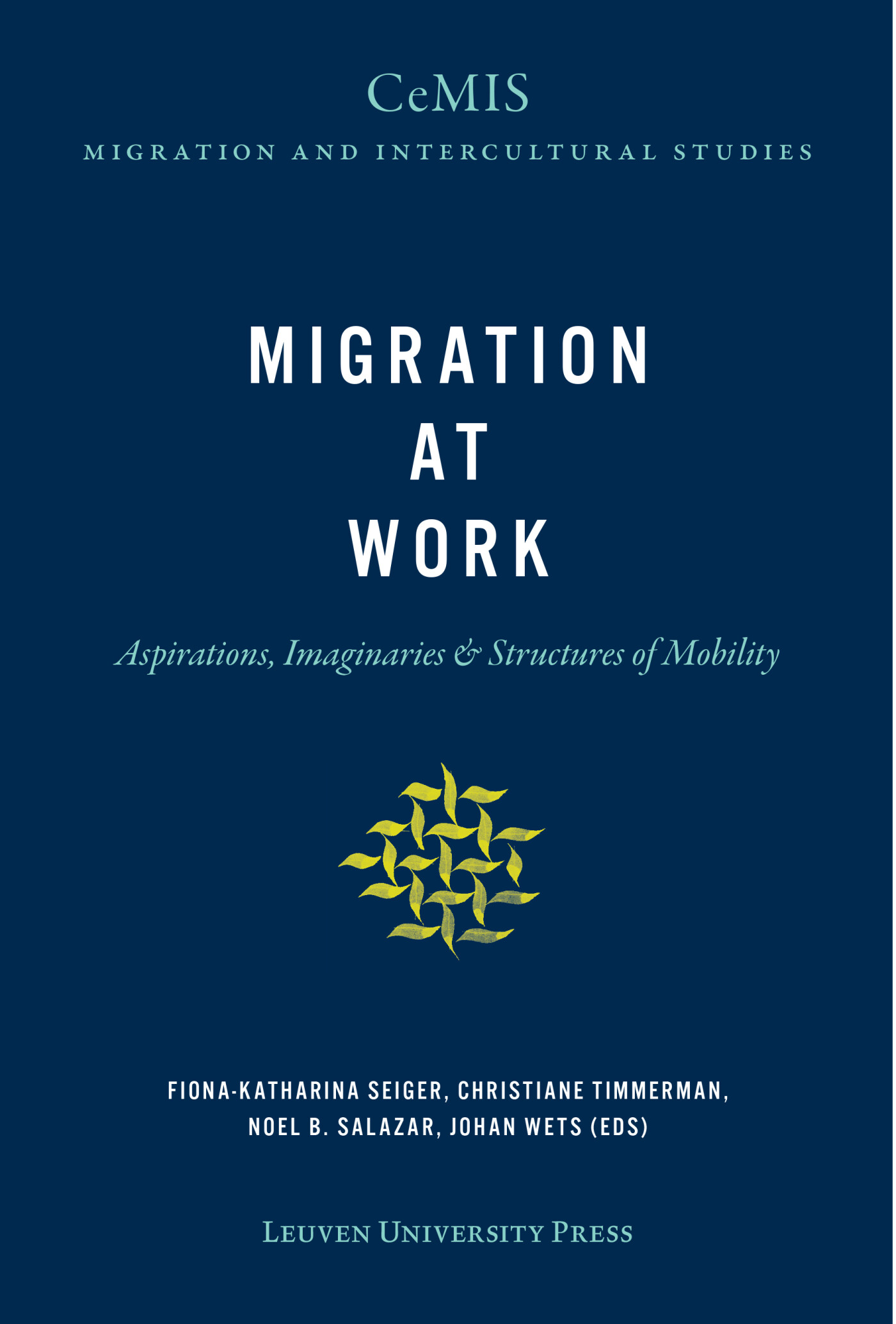
|
migration at work
fiona-katharina seiger, christiane timmerman, noel b. salazar, johan wets
The willingness to migrate in search of employment is in itself insufficient to compel anyone to move. The dynamics of labour mobility are heavily influenced by the opportunities perceived and the imaginaries held by both employers and regulating authorities in relation to migrant labour. This volume offers a multidisciplinary approach to the study of the structures and imaginaries underlying various forms of mobility. Based on research conducted in different geographical contexts, including the European Union, Turkey, and South Africa, and tackling the experiences and aspirations of migrants from various parts of the globe, the chapters comprised in this volume analyse labour-related mobilities from two distinct yet intertwined vantage points: the role of structures and regimes of mobility on the one hand, and aspirations as well as migrant imaginaries on the other. Migration at Work thus aims to draw cross-contextual parallels by addressing the role played by opportunities in mobilizing people, how structures enable, sustain, and change different forms of mobility, and how imaginaries fuel labour migration and vice versa. In doing so, this volume also aims to tackle the interrelationships between imaginaries driving migration and shaping “regimes of mobility”, as well as how the former play out in different contexts, shaping internal and cross-border migration.
Based on empirical research in various fields, this collection provides valuable scholarship and evidence on current processes of migration and mobility.
The willingness to migrate in search of employment is in itself insufficient to compel anyone to move. The dynamics of labour mobility are heavily influenced by the opportunities perceived and the imaginaries held by both employers and regulating authorities in relation to migrant labour. This volume offers a multidisciplinary approach to the study of the structures and imaginaries underlying various forms of mobility. Based on research conducted in different geographical contexts, including the European Union, Turkey, and South Africa, and tackling the experiences and aspirations of migrants from various parts of the globe, the chapters comprised in this volume analyse labour-related mobilities from two distinct yet intertwined vantage points: the role of structures and regimes of mobility on the one hand, and aspirations as well as migrant imaginaries on the other. Migration at Work thus aims to draw cross-contextual parallels by addressing the role played by opportunities in mobilizing people, how structures enable, sustain, and change different forms of mobility, and how imaginaries fuel labour migration and vice versa. In doing so, this volume also aims to tackle the interrelationships between imaginaries driving migration and shaping “regimes of mobility”, as well as how the former play out in different contexts, shaping internal and cross-border migration.
Based on empirical research in various fields, this collection provides valuable scholarship and evidence on current processes of migration and mobility.
Migration and Labour Mobility
The willingness to migrate in search of employment is in itself insufficient to compel anyone to move. The dynamics of labour mobility are heavily influenced by the opportunities perceived and the imaginaries held by both employers and regulating authorities in relation to migrant labour. This volume offers a multidisciplinary approach to the study of the structures and imaginaries underlying various forms of mobility. Based on research conducted in different geographical contexts, including the European Union, Turkey, and South Africa, and tackling the experiences and aspirations of migrants from various parts of the globe, the chapters comprised in this volume analyse labour-related mobilities from two distinct yet intertwined vantage points: the role of structures and regimes of mobility on the one hand, and aspirations as well as migrant imaginaries on the other. Migration at Work thus aims to draw cross-contextual parallels by addressing the role played by opportunities in mobilizing people, how structures enable, sustain, and change different forms of mobility, and how imaginaries fuel labour migration and vice versa. In doing so, this volume also aims to tackle the interrelationships between imaginaries driving migration and shaping “regimes of mobility”, as well as how the former play out in different contexts, shaping internal and cross-border migration.
Based on empirical research in various fields, this collection provides valuable scholarship and evidence on current processes of migration and mobility. |